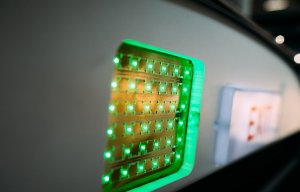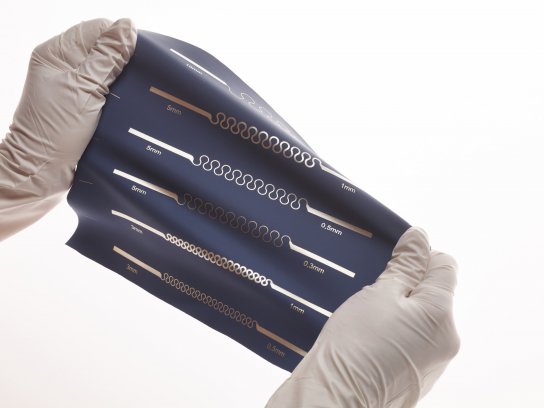
Potential for printed electronics in aerospace components
Transforming passive textiles into active and interactive devices.

5th October 2023
Innovation in Textiles
|
St. Niklaas, Belgium
Ahead of the Future of Electronics Reshaped conference and tradeshow which takes place in Berlin from October 17-18, Wim Christiaens, R&D director at Quad Industries, based in St. Niklaas, Belgium has outlined the benefits of integrating monitoring, sensing and heating technology into fabrics.
“Textiles are tactile, sensorial and visual – qualities that can be modified or even expanded when technology is added, transforming passive textiles into active and interactive devices, monitoring and detecting bodily functions due to their constant contact with the skin,” he says. “Thanks to their flexibility, stretchability and light weight, printed electronics allow for smart garments that function as a second skin with a great level of comfort for its wearer.
Printed electronics are also more durable than traditional electronics and can withstand multiple washing cycles, crinkling, friction and sweating.
The lower production costs and easy scalability of printed electronics also stimulate the development of new IoT applications and a larger adoption of e-garments and smart fabrics in general, which can promote a healthier lifestyle and reduce the risk of disease, accidents and injuries in many industries.
Their integration is straightforward. After printing the sensors on TPU they can be transferred onto the textile material via hot press lamination. Both are well-established techniques.
Applications
A wide range of smart sportswear (e.g. shirts, insoles, sports bras) track vital signs (via printed ECG or EMG sensors), core temperature, and biomechanics both during training and in the recovery phase. It helps athletes to enhance performance, ensure a healthy athletic growth, help reduce stress and prevent different types of injuries.
Smart textiles serve as a functional and comfortable ‘wearable computer’ that help health care professionals by monitoring and communicating a patient's condition by detecting, storing, analysing, and transmitting physiological signals.
In the aerospace industry and in vehicle engineering, current applications focus on smart sensors integrated in interior fabrics and biometric monitoring for safety purposes. Information can provide insight into the driver's physical condition and level of fatigue, triggering haptic feedback through the steering wheel or warning alerts in the car's cockpit.
The monitoring of vital signs of workers in demanding environments and high-risk industries has been made easier. In regulated industries where safety rules restrict workers from wearing devices, smart workwear can give insightful information about the condition of workers or machine operators that can be used to optimize their well-being, performance and productivity. Thermal workwear to dynamically regulate body temperature of workers in cold climates is another major application.
There is a steep rise of interest in heating technology for garments. Stretchable printed electronics heaters make it easy to incorporate heat into comfortable, elegant, flexible, lightweight clothing. The high precision that can be achieved with screen-printed circuitry also makes it simpler to provide warmth exactly where required and avoid areas of the body which don’t need any additional heat.
“Compared to traditional electronics manufacturing, printed electronics are easily scalable and low cost,” Christiaens concludes. “They are durable, precise, efficient and comfortable to wear and also have excellent interconnectability. The PCB’s can be positioned in a remote spot, are small and don’t need much power to work. We look forward to discussing options for their integration at Future of Electronics Reshaped.”

Business intelligence for the fibre, textiles and apparel industries: technologies, innovations, markets, investments, trade policy, sourcing, strategy...
Find out more